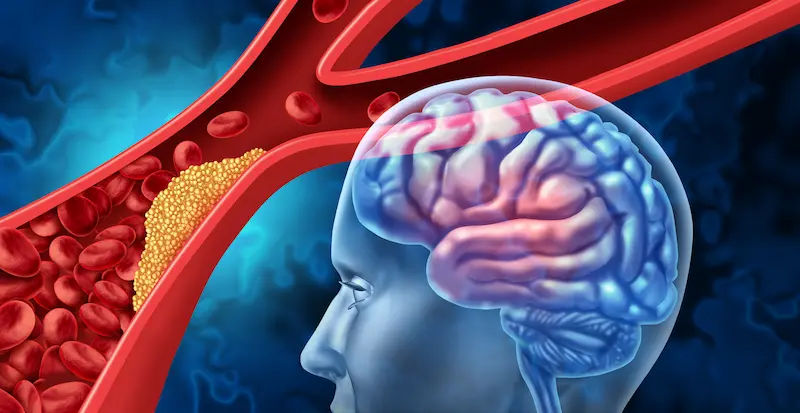Vegan Diet Guide: Benefits, Risks, and How to Start
Explore a complete Vegan Diet Guide covering its benefits, risks, and how to start. Learn what to eat, avoid, and how to plan balanced vegan meals for all life stages — including pregnancy, athletes, and older adults.


Introduction
Thinking about a vegan diet but unsure where to begin? You’re not alone. Interest in plant-based eating has surged as people look for ways to improve heart health, manage weight, reduce chronic disease risk, and tread more lightly on the planet. Yet the internet can be a maze of conflicting advice: some promise miracle results, others warn of inevitable deficiencies. The truth lies in between. A well-planned vegan diet can be nutritious and satisfying, but it does require a little know-how.
In this guide, we translate the best available evidence into practical steps for the general public. You’ll learn what a vegan diet is (and isn’t), science-backed benefits, potential risks and how to avoid them, and exactly how to stock your kitchen, plan meals, and eat out with confidence. We’ll also cover special considerations for pregnancy, kids, athletes, and older adults, and share lab testing tips and supplement strategies when appropriate. Whether you want a 7-day starter plan or a long-term lifestyle shift, this comprehensive resource will help you build a balanced vegan diet that fits real life.
What Is a Vegan Diet? Types and Variations
Here’s what you need to know about what defines a vegan diet and how people practice it:
A vegan diet excludes all animal-derived foods—meat, poultry, fish, dairy, eggs, and often honey—and centers meals around fruits, vegetables, whole grains, legumes, nuts, and seeds. Many people choose a vegan diet for health, environmental, or ethical reasons; others are curious about potential heart and weight benefits.
Within veganism, there’s a spectrum. Some pursue a whole-food plant-based approach, emphasizing minimally processed foods and limiting oils, added sugars, and refined grains. Others follow a more flexible, plant-predominant pattern that still avoids animal foods but allows for convenience products like fortified plant milks, tofu-based deli slices, or meat analogues. Both can work. The key is planning for nutrient adequacy and choosing foods that make adherence easy.
What vegans eat:
- Staples: beans, lentils, chickpeas; tofu, tempeh, edamame; whole grains (brown rice, oats, quinoa, whole-wheat pasta); vegetables and fruits; nuts and seeds.
- Fortified foods: plant milks, yogurts, nutritional yeast, iodized salt, and some breakfast cereals.
What vegans avoid:
- Animal products: meat, fish, shellfish, dairy, eggs; many also exclude gelatin and certain food additives with animal origins.
- Think of vegan eating as “plant-forward, protein-anchored.” Start meals by picking a protein (tofu, tempeh, seitan, legumes), then add colorful vegetables, whole grains, and a source of healthy fat. This simple framework improves satiety and nutrient balance from day one.
Consult Top Specialists Here
Health Benefits: What the Evidence Says
- A vegan diet, when well-planned, is linked with favorable health markers, largely due to higher intakes of fiber, polyphenols, and unsaturated fats, and lower intakes of saturated fat and dietary cholesterol. Large observational cohorts and public health reviews suggest a lower risk of ischemic heart disease and beneficial effects on cholesterol and blood pressure with plant-based patterns. For many, a vegan diet for beginners can also support sustainable weight loss.
- Weight loss and maintenance: Meta-analyses show that vegan diets can produce modest weight loss compared to omnivorous patterns, partly via higher fiber and lower energy density. People often report feeling fuller on fewer calories. A practical strategy: build plates using a 50/25/25 template—half non-starchy vegetables, one-quarter protein-rich legumes or tofu, one-quarter whole grains—then add a thumb of healthy fats (e.g., tahini).
- Cardiometabolic health: Plant-forward diets are associated with improved LDL cholesterol, insulin sensitivity, and blood pressure. For those with diabetes or prediabetes, a vegan diet for diabetes management can emphasize whole grains, legumes, minimally processed foods, and attention to carbohydrate distribution through the day.
- Gut health: High-fiber vegan diets cultivate a diverse microbiome and increase production of short-chain fatty acids, which support gut integrity and metabolic health. Practical tip: aim for “30 plants per week” (counting herbs, spices, and different beans and grains) to maximize microbial diversity.
- Environmental and ethical side benefits: Although not strictly health outcomes, vegan diets generally reduce greenhouse gas emissions and resource use compared with animal-heavy diets, which many find motivating.
Potential Risks and How to Avoid Deficiencies
Here’s how to manage the possible nutrient gaps in a vegan diet:
A vegan diet can be fully adequate at all life stages when thoughtfully planned, but certain nutrients require attention: vitamin B12, iron, calcium, vitamin D, iodine, omega-3 (DHA/EPA), zinc, selenium, and choline.
- Vitamin B12: Essential for nerve and blood health; plant foods don’t reliably supply it. Use B12-fortified foods (nutritional yeast, plant milks) and/or a supplement, as advised by your healthcare provider.
- Iron: Plant (non-heme) iron is less readily absorbed than heme iron. Combine beans/lentils with vitamin C sources (citrus, peppers) and avoid tea/coffee with iron-rich meals to enhance absorption.
- Calcium and vitamin D: Choose low-oxalate greens (kale, bok choy), calcium-set tofu, and fortified milks/yogurts; vitamin D supplementation may be needed depending on sun exposure.
- Iodine: Use iodized salt; seaweed can help but may be inconsistent in iodine content.
- Omega-3: ALA sources include flax, chia, walnuts; consider an algae-based DHA/EPA supplement for brain and heart health.
- Zinc, selenium, choline: Include whole grains, legumes, seeds (zinc), Brazil nuts (selenium), and soy, quinoa, broccoli, and peanuts (choline).
Bone health: A UK cohort found higher fracture risk in vegans when calcium and protein intakes were low, highlighting the need for adequate calcium, vitamin D, and protein. Two practical steps: use calcium-fortified plant milks daily and aim for a protein source at each meal.
Labs and signs to watch: Consider periodic checks of vitamin B12 (and/or methylmalonic acid), ferritin/iron studies, 25-hydroxy vitamin D, and lipid profile. If you notice persistent fatigue, hair loss, brittle nails, frequent infections, numbness/tingling, or mood changes, consult a clinician. If symptoms persist beyond two weeks, consult a doctor online with Apollo 24|7 for further evaluation. Apollo 24|7 also offers convenient home collection for tests like vitamin D, ferritin, vitamin B12, and HbA1c when relevant.
Think in “nutrient pairs.” Pair iron with vitamin C, calcium with vitamin D, ALA with algae DHA/EPA, and protein with leucine-rich sources. This pairing mindset reduces the chance of gaps.
Protein, Iron, Calcium, Omega-3, and More: Practical Sources
Here’s how to meet your nutrient needs on a vegan diet:
- Protein: Anchor meals with tofu, tempeh, seitan, edamame, beans/lentils, and soy yogurt. Aim for roughly 1.0–1.2 g/kg/day for general health (more for athletes or older adults). Include 20–35 g protein per meal and ensure leucine (~2–3 g/meal).
- Iron and zinc: Lentils, chickpeas, soy foods, pumpkin seeds, quinoa, and fortified cereals are top vegan iron sources. Boost absorption by adding vitamin C (lemon, tomatoes, berries). Zinc sources include whole grains, legumes, nuts, and seeds; soaking/sprouting helps.
- Calcium: Low-oxalate greens (kale, bok choy, broccoli) offer well-absorbed calcium. Use calcium-set tofu and fortified milks/yogurts to reach ~1000–1200 mg/day.
- Omega-3: Aim for ALA daily (1–2 tbsp ground flax, 1–2 tbsp chia, or a handful of walnuts). Consider an algae-based DHA/EPA supplement—especially helpful in pregnancy, lactation, and older adults.
- Iodine, selenium, choline: Use iodized salt regularly; 1–2 Brazil nuts can cover selenium needs for most adults; include soy, quinoa, broccoli, and peanuts to improve choline intake.
Smart Planning: Meal Plans, Budget Tips, and Grocery Lists
Here’s how to plan and maintain your vegan meals effectively:
A 7-day vegan meal plan framework
- Breakfast: overnight oats with chia and fortified soy milk; tofu scramble; smoothie with soy milk and berries.
- Lunch: lentil-quinoa salad; whole-wheat pita with hummus and roasted veggies; tofu-broccoli stir-fry.
- Dinner: chana masala; tempeh fajitas; pasta with lentil Bolognese; tofu with bok choy and soba.
- Snacks: fruit + nuts; edamame; roasted chickpeas; soy yogurt with berries.
- Budget-friendly staples: Dry beans, lentils, oats, brown rice, whole-wheat pasta, frozen veggies, tofu, seasonal produce, bulk seeds, and fortified plant milks.
- Global cuisines: Indian, Ethiopian, Mediterranean, Mexican, and East Asian cuisines are naturally vegan-friendly and flavorful.
Special Populations: Pregnancy, Kids, Athletes, and Older Adults
Here’s how to adapt a vegan diet for different life stages:
- Pregnancy and lactation: Focus on energy-dense, protein-rich foods, iron, iodine, choline, and omega-3. Take prenatal vitamins including iron, iodine, folic acid, and B12.
- Children and teens: Ensure adequate calories, protein, calcium, vitamin D, iron, and B12. Include fortified milks, beans, lentils, and nut butters.
- Athletes: Ensure higher protein (1.6–2.2 g/kg/day), leucine-rich foods, iron, and omega-3. Distribute protein evenly across meals.
- Older adults: Prioritize protein density, vitamin D, calcium, and B12. Include easy-to-chew foods like tofu, tempeh, and soft legumes.
Getting Started and Staying Consistent
Here’s how to make your vegan lifestyle stick:
Pantry setup:
Tofu, tempeh, seitan, beans, lentils, oats, rice, quinoa, spices, fortified plant milks, and iodized salt.
Eating out and social life:
Preview menus, ask for vegan swaps, and bring snacks. Offer to bring a vegan dish when attending gatherings.
A simple adherence framework:
Protein anchor + color + fiber — start with a protein, add colorful veggies, include a whole grain, and healthy fat.
Myths and Real Talk: Evidence vs. Hype
Here’s what’s true and what’s not about vegan diets:
- Protein myths: You can meet protein needs with legumes, soy foods, and plant protein blends—no need for “protein combining.”
- Soy and hormones: Moderate soy intake is safe and beneficial for most people.
- “Natural = sufficient” fallacy: Even a “clean” vegan diet requires fortified foods or supplements for B12, and sometimes vitamin D and omega-3.
Consult Top Specialists Here
Conclusion
A vegan diet can be a powerful, practical way to improve health—when it’s planned with intention. The core strengths come from fiber-rich, minimally processed plant foods: legumes, whole grains, vegetables, fruits, nuts, and seeds. Evidence associates well-constructed vegan eating patterns with improvements in cholesterol, blood pressure, glycemic control, and weight management, alongside benefits for gut health and the environment. Yet success hinges on a few smart moves: make protein a centerpiece, use fortified foods routinely, supplement vitamin B12, and keep an eye on iron, calcium, vitamin D, iodine, and omega-3.
Start simple: build meals around a protein anchor, add two colors of vegetables, include a whole grain, and finish with a healthy fat and a flavor booster. Consider periodic labs to personalize your approach; if you notice persistent symptoms such as fatigue, tingling, or unusual hair loss, consult a clinician. If your condition does not improve after trying these methods, book a physical visit to a doctor with Apollo 24|7. With a practical pantry, a few go-to sauces, and the nutrient-pairing mindset, a vegan diet can be both satisfying and sustainable—for beginners and longtime plant eaters alike. Ready to get started? Try the 7-day meal framework above, and tailor it to your tastes and culture—because the best vegan diet is the one you enjoy enough to keep.
Consult Top Specialists Here
Ms. Bhavana Shetty
Dietician
7 Years • DDHN & Masters in Clinical Nutrition & Dietetics
Bangalore
Apollo Sugar Clinic, Seetha circle bangalore, Bangalore

Ms. Samapti Maity
Dietician
11 Years • Bsc (Clinical Nutrition & Dietitics), NDEP, Course in Maternal Infant Young Child Nutrition.
Kolkata
BIENETRE CLINIC, Kolkata

Ms. Sreeparna Dey Dhara Deb
Dietician
10 Years • DNHE
Bansdroni
Siddhita Healthcare., Bansdroni
Dr. Sasikamalam
General Practitioner
1 Years • MBBS
COIMBATORE
Apollo Sugar Clinic Coimbatore, COIMBATORE

Ms. Soma Saha
clinical nutrition
17 Years • B.Sc. - Home Science (Food & Nutrition), M.Sc. - Home Science (Food & Nutrition)
Kolkata
Dr Utsa Basu Clinic, Kolkata
(50+ Patients)
Consult Top Specialists Here
Ms. Bhavana Shetty
Dietician
7 Years • DDHN & Masters in Clinical Nutrition & Dietetics
Bangalore
Apollo Sugar Clinic, Seetha circle bangalore, Bangalore

Ms. Samapti Maity
Dietician
11 Years • Bsc (Clinical Nutrition & Dietitics), NDEP, Course in Maternal Infant Young Child Nutrition.
Kolkata
BIENETRE CLINIC, Kolkata

Ms. Sreeparna Dey Dhara Deb
Dietician
10 Years • DNHE
Bansdroni
Siddhita Healthcare., Bansdroni
Dr. Sasikamalam
General Practitioner
1 Years • MBBS
COIMBATORE
Apollo Sugar Clinic Coimbatore, COIMBATORE

Ms. Soma Saha
clinical nutrition
17 Years • B.Sc. - Home Science (Food & Nutrition), M.Sc. - Home Science (Food & Nutrition)
Kolkata
Dr Utsa Basu Clinic, Kolkata
(50+ Patients)
More articles from General Medical Consultation
Frequently Asked Questions
Do I need a vitamin B12 supplement on a vegan diet?
Yes—either regular B12-fortified foods or a B12 supplement is recommended to prevent deficiency. Vitamin B12 for vegans is non-negotiable; discuss dosage with your clinician.
Can I build muscle on a vegan diet?
Absolutely. Aim for 1.6–2.2 g/kg/day protein when training, distribute protein across meals, and include leucine-rich foods or a balanced plant protein blend.
What are the best iron sources in a vegan diet?
Lentils, chickpeas, tofu, tempeh, pumpkin seeds, quinoa, and fortified cereals. Pair with vitamin C (citrus, peppers) and avoid tea/coffee with meals to enhance absorption.
Is soy safe to eat daily?
For most people, yes. Minimally processed soy (tofu, tempeh, edamame, soy milk) is linked to health benefits, not hormonal harm, in human research.
How do I get omega-3 on a vegan diet?
Include ALA sources (flax, chia, walnuts) daily, and consider an algae-based DHA/EPA supplement—especially useful in pregnancy, lactation, and older age.




